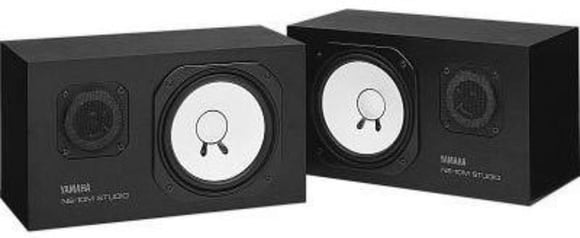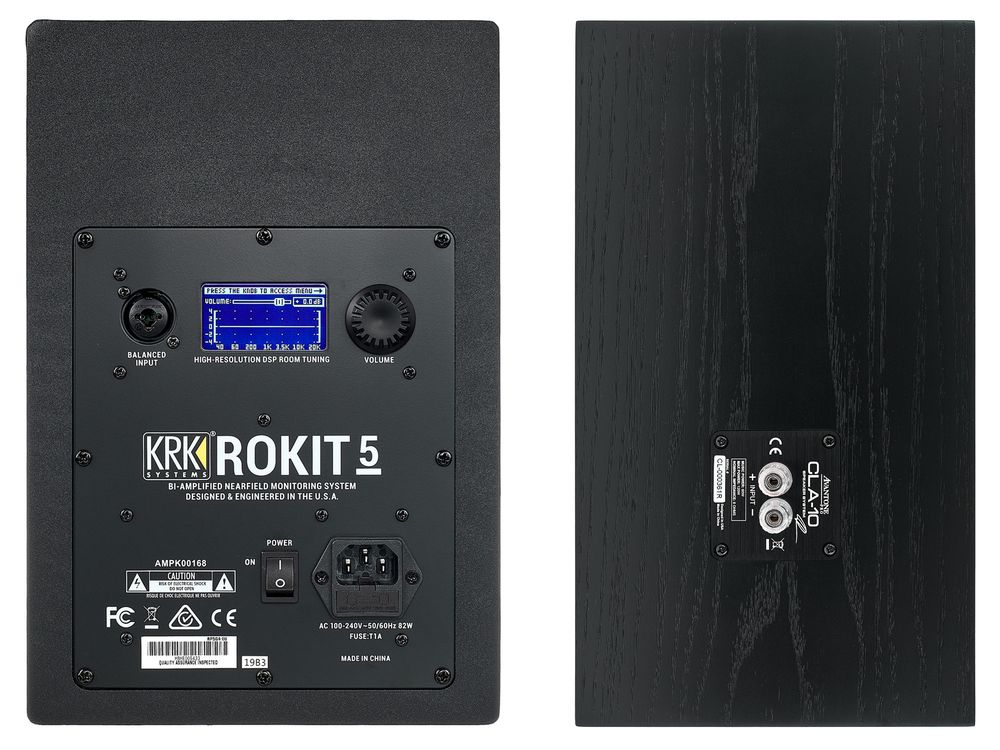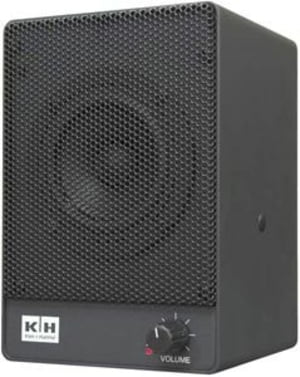2. Cabinet Design & Concepts
At first glance, studio monitors might look like your run-of-the-mill speakers. Yet, they're more than just a different shape and size. There are crucial distinctions that you should consider when shopping for them. Let's break down these differences:
Infinite Baffle or Bassreflex
Let's start by discussing the enclosure design. Some studio monitors come in sealed enclosures, which means they are completely airtight. This design ensures a quick phase response, meaning the sound from the driver reaches your ears without significant delay. However, there are limitations in the low-frequency range. In sealed enclosures, the woofer has to work against high air resistance inside the box, which can restrict its bass performance. A classic example of a sealed-box design is the Yamaha NS10M, which became a studio standard, despite its not-so-stellar sound quality. It's known for revealing mix "errors" due to its design.

Yamaha NS-10M
More commonly, studio monitors come with bass reflex designs, which you can recognize by the presence of a bass reflex port on the front or back of the enclosure. This port enables greater airflow between the interior and exterior of the speaker cabinet. Consequently, the speaker's diaphragm can move more freely, making bass reflex monitors more efficient at reproducing lower frequencies. The specific length and cross-section of this port determine how sound flows within the enclosure, and each manufacturer has its unique approach to achieve a balanced and linear sound representation.
Passive or Active
Passive monitors are the ancestors of all monitors historically. You can identify them by the presence of two or more robust speaker inputs on the back. These monitors depend on an external power amplifier (or power amp) to function. To maintain optimal sound quality, it's crucial to minimize the length of cable runs between the power amp and the speakers. If a monitor incorporates multiple drivers, they are connected through an integrated passive crossover. External adjustments to the frequency response are possible only in a few models with small switches. In some monitors, you might find separate connections for the tweeter and woofer, a configuration known as bi-amping, which requires two power amps and an external crossover.
Today, active monitors have become the norm in most studios. These monitors come equipped with built-in amplification and crossovers. Their integrated crossovers efficiently and accurately distribute different frequency bands to the respective drivers. With this design, critical signal paths are kept short, and you can drive the monitor directly from the output of your mixing console or audio interface. Every component within the enclosure is optimized to work in harmony. In fact, modern monitors may even incorporate integrated digital-to-analog converters (DACs), which facilitate direct playback of digital sources. Additionally, digital amplifiers and digital signal processing (DSP) are included in many models to allow further adjustments, adapting to various room configurations and acoustic characteristics.

Active vs Passive monitor
How Many Ways?
The distinction between 1-way, 2-way, and 3-way monitors doesn't necessarily depend on the number or type of speakers within the monitor. Instead, it indicates how many frequency bands the monitor's built-in crossover divides the signal into. Among these, 2-way monitors are the most common because they offer a solid balance between cost and performance. They are relatively simple to design. On the other hand, 3-way monitors, often considered mid-range monitors, are typically larger and more complex to design. This added complexity translates to higher costs, but it also allows them to cover a broader frequency range. You'll find very few 1-way systems in use today because they compromise both in bass and treble.

One-way monitor: Klein+Hummel M 52
Coaxial speakers
Coaxial speakers have a clever design where the different speakers, like the woofer and tweeter, are stacked on top of each other in the same box. This setup is all about precision – it gives you really accurate sound because everything comes from the same spot. The bonus is that you get fantastic timing and sound distribution in a small format.




